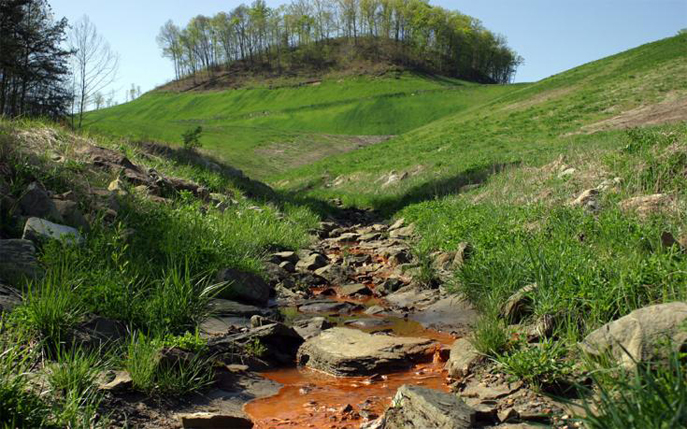Two recent court decisions offer fresh hope for Appalachia streams harmed by coal mining pollution. This is particularly welcome news in light of the successful efforts by Congressional Republicans and President Trump to invalidate the common-sense Stream Protection Rule finalized at the end of the Obama Administration. The Stream Protection Rule would have been the first comprehensive update to environmental regulations for coal mining in more than thirty years, and would have incorporated recent scientific findings on the impacts of coal mining to streams.
In early January, the US Court of Appeals for the Fourth Circuit affirmed a lower court decision holding a coal company liable for violating a term of its Clean Water Act permit that prohibited pollution discharges that are harmful to aquatic life. And just this week, a federal court in West Virginia directed the state and the federal Environmental Protection Agency to take action to clean up streams harmed by coal mining pollution. These decisions are a victory for science and clean water, and a direct rebuke to state leaders looking to prop up a dying industry.
Over the past decade, peer-reviewed scientific research has clearly established two facts. First, surface coal mines in Appalachia that place mining waste in streams discharge high levels of ionic pollution, which is frequently measured as conductivity. Second, this ionic pollution measured as increased conductivity harms aquatic life in streams below these mines and disrupts aquatic ecosystems.
Rather than accept the validity of that unimpeachable science and take steps to address the harmful pollution, the state of West Virginia instead initiated extreme measures to protect the coal industry at the expense of streams and the human and natural communities that depend on them. The radical steps taken by the West Virginia legislature and regulators include attempts to delete existing permit language prohibiting pollution that harms aquatic life, attempts to replace the current scientific methodology for determining whether streams have suffered biologic harm with one that would allow more harm, and a refusal to set watershed-scale limits on harmful mining pollution.
Federal courts have now rejected all of these transparent efforts to support industry at the expense of wildlife and local residents. The Fourth Circuit, in affirming a lower court decision, found a mine operator liable for violating the terms of its Clean Water Act discharge permit, despite the fact that the West Virginia legislature and environmental regulators subsequently sought to reinterpret the permit in a way that would shield mine operators from liability. Rather than accept the arguments of the company and its allies in the state government, the court looked to the plain language of the permit and to the “testimony, reports, charts, studies, and exhibits from experienced scientists who had published extensively in peer-reviewed journals” – all of which demonstrated a clear violation of permit standards meant to protect stream life. As a result, the company must reduce the levels of ionic pollution being discharged to the impaired streams.
And just this week a West Virginia federal court told West Virginia and the EPA that the state has a duty to develop "Total Maximum Daily Load" (TMDL) limitations for coal mining conductivity pollution in multiple streams in the state. One of the requirements for states under the Clean Water Act is to develop a list of streams impaired by pollution, and then to develop TMDLs to control the pollution in these streams. West Virginia has done everything it can to avoid setting limits on or otherwise regulating conductivity pollution. In reaching its decision, the court rejected the state’s argument that it needs more time to develop a new methodology for measuring the health of aquatic ecosystems. The court was not shy in criticizing the state’s efforts to delay protections for these streams, writing that “All of WVDEP’s plodding and EPA’s appeasement have resulted in an abjuration of WVDEP’s and EPA’s duties committed to each by the CWA. WVDEP has publically stated that it will not develop TMDLs for biologic impairment and has continued to move the goalposts for when it will begin developing them once again.” EPA must now immediately review West Virginia’s failure to protect these streams, and either compel the state to take appropriate action, or develop TMDLs on its own.
Now more than ever, when the coal industry and its allies in the state and federal government are actively working to roll back basic protections from mining pollution, courts play a critical role in ensuring that legal protections are given their full effect and decisions are based on sound science. Sierra Club will continue to use strategic litigation to protect our streams and communities and to push back against efforts to give the coal mining industry a free hand to pollute.
Together with local allies West Virginia Highlands Conservancy and Ohio Valley Environmental Coalition, Sierra Club was represented in the lawsuits by attorneys with Appalachian Mountain Advocates.
